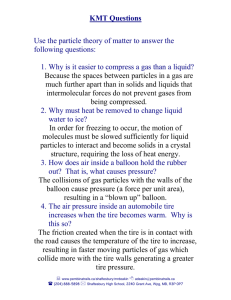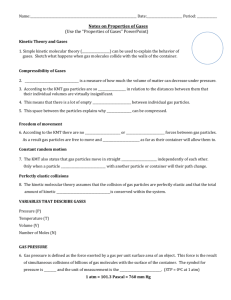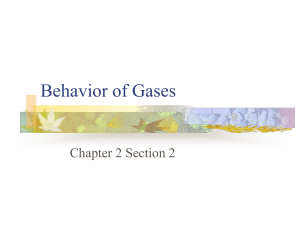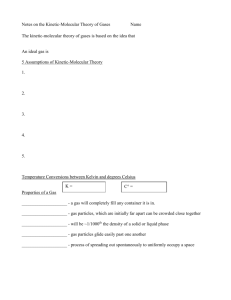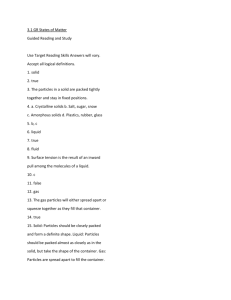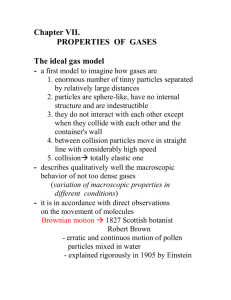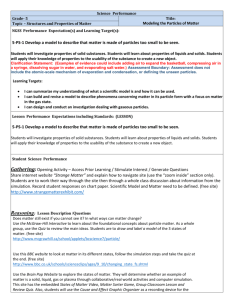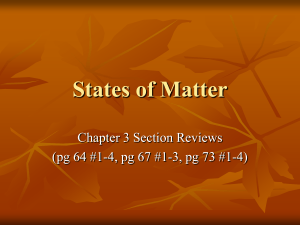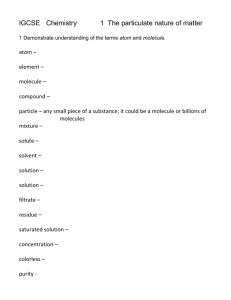Gases 3
advertisement
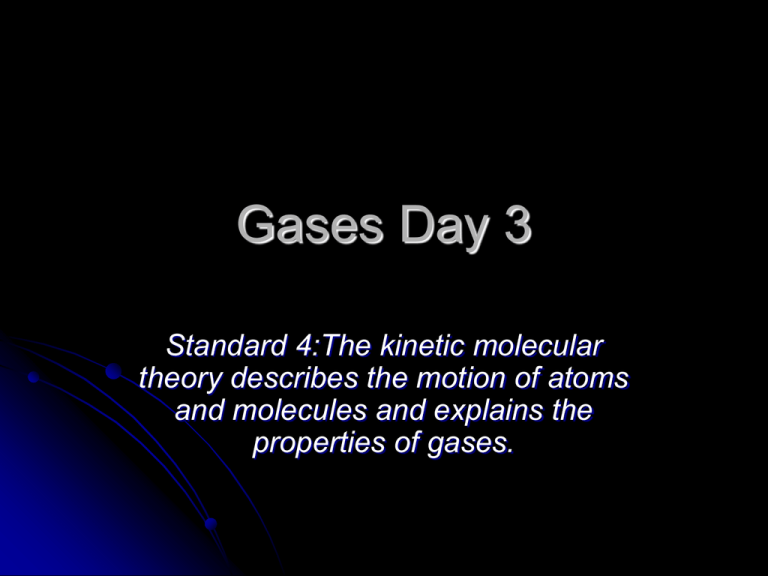
Gases Day 3 Standard 4:The kinetic molecular theory describes the motion of atoms and molecules and explains the properties of gases. Objective I can explain gas properties using the kinetic molecular theory of gases. Agenda Catalyst HW Review Under Pressure! KMT Memory Game Exit Slip Catalyst Discuss: Is there any scientific basis for the assertion that “whoever smelt it dealt it?” Why or why not? Take out last night’s HW to be stamped. Turn in your poster if you have not already. Homework: Skim pp. 423 – 432 in order to answer p. 432 # 1-4 Homework Review 1. The characteristic of gases that makes them different from liquids or solids is their relatively large intermolecular distances. The distance between gas molecules is very large. 3. When a gas is compressed the gas particles are pushed closer together. Homework Review 7. A gas’s ability to fill a container is different from that of a liquid or a solid because a gas fills the entire container. Liquids take on the shape of the bottom of a container but do not spread out to fill it. Solids maintain their own shape. Homework Review 11. The kinetic-molecular theory can explain why atmospheric pressure is greater at lower altitudes than at higher altitudes if we remember that gravity acts on gas particles. The force of gravity pulls more gas particles towards the earth’s surface. Because there are more gas particles in any given space at lower altitudes, there are more collisions of the particles against surfaces and therefore higher pressure. Conversely, as you move to high altitudes, there are less gas particles causing less collisions and therefore less pressure. Under Pressure! Reading Activity! Work quietly with a partner. Be ready to learn: What is air pressure? How do we measure pressure? If you finish early, play the KMT memory game! Homework Finish any article questions or worksheet problems. Skim pp. 423-432 Do problems pp. 432 #14 (additional resources on class website) Optional: Flashcards: pascals, mm Hg, atmospheres, vapor pressure, Boyle’s Law, Charles’s Law, Gay-Lussac’s Law, Avogadro’s Law Exit Slip Answers 1. Ms. Boon drove over a nail, punching a hole in her tire. What happened to the air that was in the tire? It escaped. Did the air pressure in the tire increase or decrease? The pressure decreased. Why? There were fewer gas molecules to hit the side of the tire. 2. Eduardo blew up a balloon so big that it popped. Why did the balloon pop? The pressure the air exerted on the balloon became too much for the plastic.
